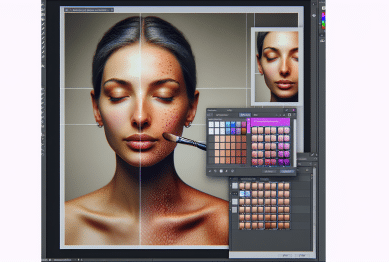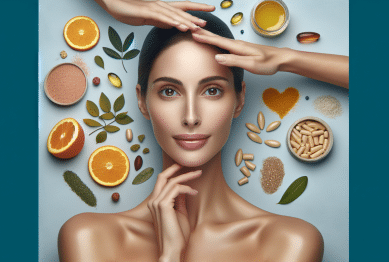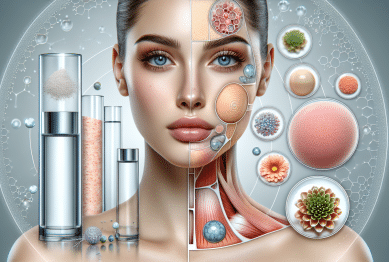Discover the science and rituals behind glowing skin in this mindful guide. Explore practical strategies for enhancing your complexion, including proven skincare routines, holistic beauty solutions, and lifestyle habits that support radiance from within. Learn what influences skin health and uncover beauty secrets that many overlook.
The Real Influencers on Skin Glow
When searching for glowing skin, it’s tempting to focus on hyped-up products or celebrity endorsements. But the science of radiance goes much deeper. The skin, being the body’s largest organ, reflects both internal and external health. Factors like hydration, balanced nutrition, gentle cleansing, and the avoidance of harsh chemicals lay the foundation for naturally beautiful skin. Proper hydration deserves special mention—not only does it support the skin’s barrier function, but it also helps flush out impurities, making your complexion appear more luminous. Nutrition, especially foods rich in antioxidants and healthy fats, also supports this process by providing the building blocks for new skin cells and warding off environmental stressors (https://www.hsph.harvard.edu/nutritionsource/antioxidants/).
External factors strongly impact the appearance of your skin. Environmental stressors like air pollution and UV radiation create free radicals that can dull the skin and accelerate aging. Integrating mindful protection strategies—such as using broad-spectrum sunscreen and adopting antioxidant-rich serums—can help counteract these effects. All skin tones and types benefit from consistent routines tailored to their unique needs. Even small adjustments, like regular washing with pH-balanced cleansers and sleeping on clean pillowcases, can prevent breakouts and leave skin clearer and brighter (https://www.aad.org/public/diseases/skin-care/skin-care-basics).
Mental well-being is a surprising contributor to skin health. Stress triggers hormonal changes that may result in breakouts or redness. Integrating stress reduction techniques—such as meditation, breath work, or gentle movement like yoga—can help keep skin calm and balanced. In many cases, glowing skin is born from a synergy between mindful products, environmental awareness, and daily rituals that support inner calm. Reflecting on which habits truly nurture the skin can be transformative.
Building an Effective Skincare Routine
An effective skincare routine doesn’t need to be elaborate to deliver results. The most radiant complexions often rely on gentle, consistent, and minimal steps. Core routines typically involve cleansing, moisturizing, and protection. Cleansers should remove impurities without stripping the skin’s natural oils, while moisturizers lock in hydration and restore flexibility. Adding a third step, like sunscreen during the day, creates an everyday shield against photoaging, one of the most significant external factors leading to skin dullness and uneven tone. A consistent routine encourages the skin’s natural rhythms, letting the complexion thrive without being overloaded (https://www.ncbi.nlm.nih.gov/pmc/articles/PMC6017965/).
Knowing your skin’s specific needs ensures you choose products that enhance rather than disrupt the skin barrier. Ingredients like hyaluronic acid, niacinamide, and ceramides support hydration and resilience, while mild exfoliants can gently remove dead skin, restoring brightness. It’s worth noting that not every trending ingredient will benefit every skin type; patch testing and gradual integration reduce risks. Overusing products or switching regimens too often can backfire, causing irritation or imbalances. Less can truly be more.
Nighttime is prime time for skin repair and rejuvenation. Melatonin levels rise in the dark, signaling the body to heal itself—including the skin. Applying nourishing overnight creams or oils can give ingredients time to penetrate. Some individuals also incorporate face massages or gua sha, gentle tools that may boost circulation and lymph drainage. Giving your skin a break from makeup—or practicing makeup-free days—lets pores breathe and supports long-term radiance. These mindful additions can enhance not just how the skin looks but also how it feels.
The Power of Ingredients: What Works and Why
Not all beauty products are created equal. Understanding which ingredients have a genuine impact on skin health allows for smarter beauty choices. For instance, antioxidants like vitamin C neutralize free radicals to prevent premature aging, while hyaluronic acid attracts and holds moisture, plumping the skin’s appearance. Niacinamide, a form of vitamin B3, supports barrier function and visibly reduces the appearance of pores, giving a more even glow (https://www.ncbi.nlm.nih.gov/pmc/articles/PMC3673383/).
Natural oils such as jojoba, argan, and rosehip have gained traction for their nurturing, balancing properties. Unlike mineral oil or heavy petroleum-based products, many natural oils are close in structure to the skin’s own sebum and can help regulate moisture without clogging pores. Some individuals see improvements after using antioxidant-rich facial oils as part of their nighttime regimen. However, those with sensitive or acne-prone skin should always do patch tests, as even natural ingredients can provoke a reaction in some cases.
It’s essential to look beyond the front label and dig into ingredient lists. Artificial fragrances, alcohol, and certain preservatives are known irritants and may undermine efforts toward glowing skin, especially for those with sensitivities. Education on labels empowers users to make confident choices tailored to their own needs. For optimal results, align product selection with both skin type and desired outcomes, such as hydration, firmness, or brightness. Personalization is key—there’s no one-size-fits-all in skincare.
Inner Beauty: Nutrition and Wellness Habits
True beauty radiates from within. What we eat greatly affects how our skin looks and feels. Diets high in antioxidants, vitamins, and minerals—drawn from berries, leafy greens, whole grains, and fatty fish—support the skin’s defense mechanisms. Omega-3 fatty acids, for example, help manage inflammation and keep skin supple. Vitamin C isn’t just good for immunity; it also boosts collagen, an essential structural protein for smooth and elastic skin (https://www.ncbi.nlm.nih.gov/pmc/articles/PMC6291446/).
Hydration is often underestimated. Water helps transport nutrients, flushes away toxins, and maintains resilience and bounce in the skin. Establishing a daily hydration habit, including water-rich foods like cucumber or watermelon, pays off in clearer and more radiant-looking skin. Some also turn to herbal teas for their antioxidant content and soothing effects, integrating mindfulness into daily wellness rituals. Nourishing from within aligns effortlessly with outer-care strategies for a comprehensive approach.
Exercise and sleep are skincare tools many people overlook. Physical activity increases circulation and oxygenates skin cells, enhancing their ability to repair and glow. Meanwhile, deep, restorative sleep allows growth hormone release—a crucial component for cell repair. Combining nutrient-rich foods, movement, and rest creates an environment where your skin is more likely to flourish. Progress may be gradual, but the benefits are long-lasting, often surpassing what topical products alone can achieve.
Stress Reduction and the Mind-Skin Connection
Emotional well-being and skin health are strongly intertwined. Stressful periods frequently correspond with acne breakouts, sensitivity, or dullness. Cortisol, the body’s main stress hormone, can increase oil production and compromise the skin barrier. Strategies such as mindfulness meditation, deep-breathing exercises, or creative hobbies can create psychological resilience and positive ripple effects on complexion.
Several studies suggest that lowering stress also reduces inflammation in the body, helping to address underlying causes of redness and flare-ups. Those who integrate relaxation practices, yoga, or a consistent sleep routine often report more balanced, even skin. Beauty is not only choreographed at the level of the skin surface, but in the nervous and endocrine systems as well (https://www.ncbi.nlm.nih.gov/pmc/articles/PMC6020741/).
Self-care rituals that combine sensory pleasure with intention—like soft music, aromatherapy, or warm baths—create a spa-like experience at home. These moments of calm contribute to both outer radiance and inner equilibrium. They reinforce a message of kindness to oneself, creating a mindset where glowing skin is just the start. The journey to beauty is as much about emotional well-being as it is about topical application.
Debunking Beauty Myths and Choosing Wisely
The wellness and beauty industry can sometimes overwhelm with conflicting advice and miracle claims. One persistent myth is that harsh exfoliation or drying products will clear up skin faster. In reality, over-exfoliation can strip natural oils, triggering more oil production or flaking. Sometimes, gentler routines are not only kinder but more effective. Another common misunderstanding is that natural always equals safe; even botanical extracts can cause allergies or irritation for sensitive individuals.
Celebrity beauty routines and trending “miracle” products are enticing, but not always grounded in evidence. The most credible beauty strategies are typically supported by clinical trials or dermatological research. Checking scientific backing rather than influencer endorsements saves time and money in the long run. Relying on reputable information sources, like the American Academy of Dermatology or academic hospital guides, ensures you are nurturing your skin with strategies that truly work (https://www.fda.gov/consumers/consumer-updates/sunscreens-safe-and-effective).
Above all, embracing individual beauty and personalizing approaches leads to a more satisfying routine. No single path fits everyone, and allowing yourself to adapt routines over time—based on changing skin, seasons, or hormonal shifts—encourages both self-knowledge and confidence. Seeking knowledge and listening to your skin fosters radiant results that go beyond surface-level aesthetics. Wellness is a journey, and glowing skin often becomes a natural companion along the way.
References
1. Harvard T.H. Chan School of Public Health. (n.d.). Antioxidants: Beyond the Hype. Retrieved from https://www.hsph.harvard.edu/nutritionsource/antioxidants/
2. American Academy of Dermatology Association. (n.d.). Skin care basics. Retrieved from https://www.aad.org/public/diseases/skin-care/skin-care-basics
3. Draelos, Z.D. (2018). The science behind skin care: Cleansers. Dermatologic Clinics, 36(3), 321-327. Retrieved from https://www.ncbi.nlm.nih.gov/pmc/articles/PMC6017965/
4. Gehring, W. (n.d.). Niacinamide—mechanisms of action and its topical use in dermatology. Retrieved from https://www.ncbi.nlm.nih.gov/pmc/articles/PMC3673383/
5. Pullar, J.M., Carr, A.C., & Vissers, M.C.M. (2017). The roles of vitamin C in skin health. Nutrients, 9(8), 866. Retrieved from https://www.ncbi.nlm.nih.gov/pmc/articles/PMC6291446/
6. Arck, P.C., Slominski, A., Theoharides, T.C., Peters, E.M.J., & Paus, R. (2006). Neuroimmunology of stress: Skin takes center stage. Journal of Investigative Dermatology, 127(5), 1205-1212. Retrieved from https://www.ncbi.nlm.nih.gov/pmc/articles/PMC6020741/






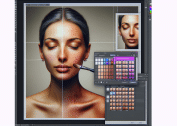

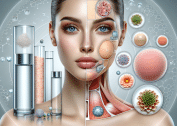

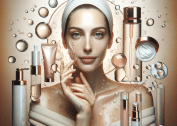
 Simple Changes to Make Your Home More Relaxing
Simple Changes to Make Your Home More Relaxing 